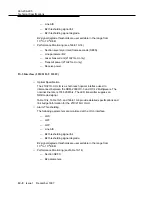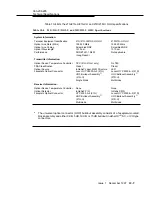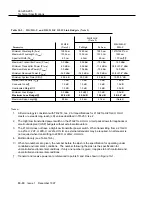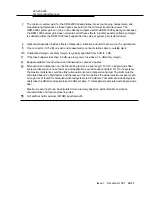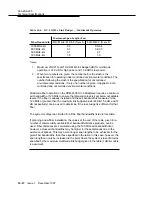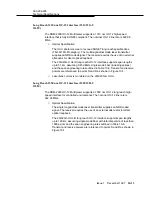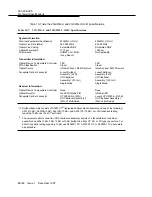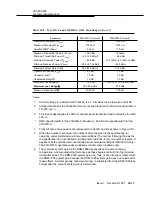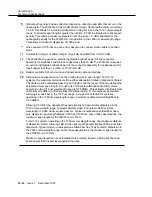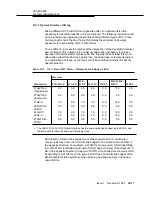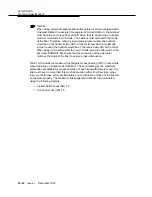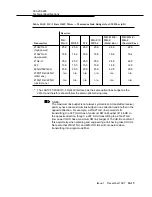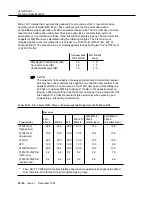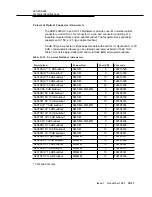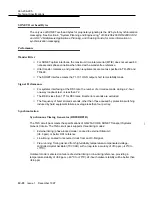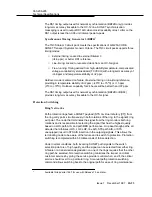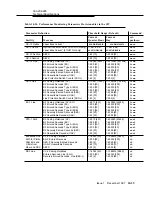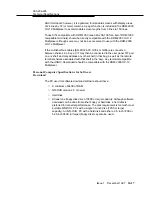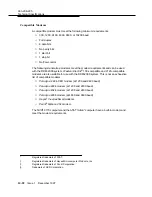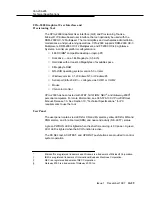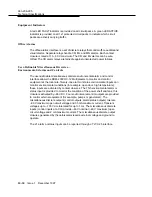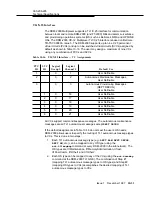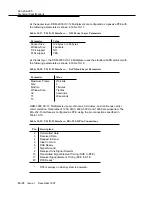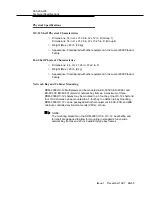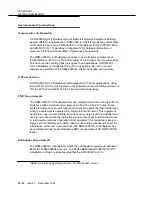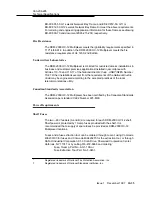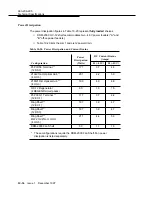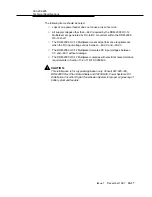
363-206-295
Technical Specifications
10-22
Issue 1
December 1997
SONET Overhead Bytes
1
0
The only use of SONET overhead bytes for proprietary signaling is the K2 byte for synchronization
messaging. See Section 6, "System Planning and Engineering," of 363-206-200
DDM-2000 OC-3
and OC-12 Multiplexers Applications, Planning, and Ordering Guide, for more information on
synchronization messaging.
Performance
1
0
Wander/Jitter
1
0
■
For SONET optical interfaces, the maximum time interval error (MTIE) does not exceed 60
nanoseconds phase variation when timed with a wander-free reference.
■
Jitter transfer, tolerance, and generation requirements are met as specified in TR-253 and
TR-499.
■
The SONET interface meets the T1.101 OC-N output short term stability mask.
Signal Performance
1
0
■
For systems interfacing at the DS3 rate, the number of errored seconds, during a 2-hour,
one-way loopback test, is less than 72.
■
The BER is less than 10
-9
for DS3 rates. Burst error seconds are excluded.
■
The frequency of burst errored seconds, other than those caused by protection switching
induced by hard equipment failures, average less than four per day.
Synchronization
1
0
Synchronous Timing Generator (BBF2/BBF2B)
1
0
The TGS circuit pack meets the specifications of GR-253-CORE, SONET Transport Systems
Generic Criteria. The TGS circuit pack supports three timing modes:
■
External timing (phase-locked mode): Locked to external Stratum 3
(
±
4.6 ppm) or better DS1 reference.
■
Line-timing: Locked to recovered clock from an OC-N signal.
■
Free-running: Timing derived from high-stability temperature-compensated voltage-
controlled crystal oscillator (TCVCXO) with a long-term accuracy of
±
15 ppm (
−
40
°
C to
+75
°
C).
Holdover mode is entered on failure of external timing or line-timing reference, providing a
temperature stability of
±
8.8 ppm (
−
40
°
C to +75
°
C). 24-hour holdover stability will be better than
±
4.6 ppm.

